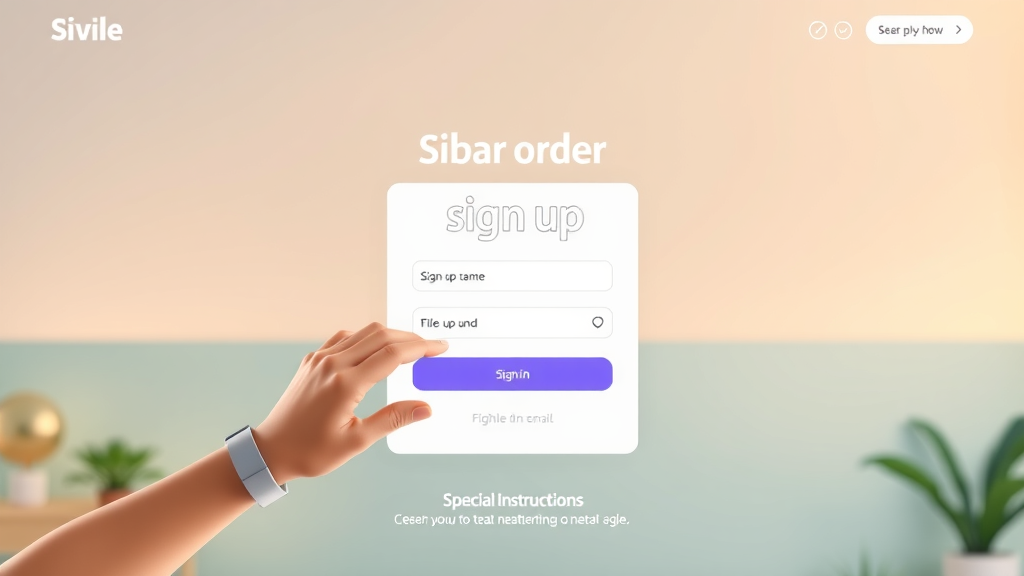Did you know? For every $1 you invest in email marketing, the average return is $42. This transformative ROI isn’t a fluke; it’s the direct result of following email marketing best practices that top brands swear by. In this comprehensive guide, you’ll discover industry-leading tactics to elevate your campaigns, outperform your competitors, and connect with your audience on a meaningful level. Dive in to see how small changes in your strategy can generate staggering results.
Unlocking Your Brand’s Potential: Startling Email Marketing Best Practices That Drive Results
- Email marketing offers a staggering $42 return for every $1 spent—a powerful investment for businesses at any stage.
- This guide uncovers the email marketing best practices that industry leaders use to skyrocket engagement and ROI.
- Take actionable steps now and set your brand apart from the competition with strategies that work.

Maximizing ROI: Why Email Marketing Best Practices Matter in Every Email Campaign
- Learn from practical examples: A retail brand saw a 20% lift in open rates simply by optimizing subject lines.
- Campaigns that use smart segmentation and engaging email content yield 2x higher click-through rates than generic blasts.
- Unlike social media or paid ads, the email market allows you to build long-term customer relationships and boost brand loyalty, all while driving sales for a fraction of the cost.
The backbone of a profitable marketing campaign is a solid understanding of why email marketing best practices cannot be ignored. By consistently applying proven tactics—like personalization and responsive email design —your business can maximize every send, increase engagement, and sustain growth regardless of industry shifts.
When you compare email to other channels, the email campaign stands out for its superior control, direct access, and measurable impact. Results are transparent, and with tools like A/B testing and analytics, you can fine-tune every aspect for ongoing improvement and exceptional ROI.
What You Will Achieve with These Email Marketing Best Practices
- Build high-performing email campaigns that consistently deliver results.
- Boost open rates through irresistible subject lines and preheaders.
- Grow a quality email list that improves over time.
- Transform your email content to become an integral part of your overall marketing strategy .

Building an Effective Email List: Core Email Marketing Best Practices
How to Grow Your Email List with Quality Subscribers
- Opt-in Tactics & Permission-Based Marketing: Always require clear consent before adding someone to your email list . Use double opt-in to ensure only genuinely interested users become subscribers, reducing bounce and unsubscribe rates. Popups, content upgrades, and exclusive discounts are proven methods to encourage signups.
- Segmentation for Relevant Email Marketing Campaigns: Once you have subscribers, segment them based on interests, behavior, and demographics. Segmentation ensures that each subscriber receives targeted, relevant content—making your email campaigns more effective and increasing engagement.
- List Hygiene & Regular Cleaning: Regularly remove inactive subscribers and invalid email addresses . This not only improves your deliverability but also keeps open rates high and protects the reputation of your sender domain.
Building your email list with quality, engaged subscribers is the key to long-term success in every email marketing campaign . By focusing on permission, segmentation, and cleanliness, your list remains a reliable resource for driving measurable results.
Essential Table: Tools & Techniques for Superior List Building
| Tool/Platform | Key Features | Effectiveness Score |
|---|---|---|
| Mailchimp | Intuitive signup forms, A/B testing, advanced segmentation | 9.5 |
| ConvertKit | Tag-based subscriber management, automation workflows, easy integrations | 9.0 |
| OptinMonster | Highly customizable popups, exit-intent tech, actionable analytics | 8.8 |
| ActiveCampaign | Behavioral targeting, multi-channel automation, detailed segmentation | 9.2 |
| HubSpot | Comprehensive CRM, smart lists, robust integrations | 8.7 |

Quote: The Power of a Quality Email List
“An engaged email list is your business’s most valuable asset.” – Marketing Institute
Crafting Effective Email Content for Top Email Marketing Campaigns
Content Types That Convert: Email Market Trends
- Newsletters keep your brand top-of-mind, while promotional blasts drive instant action, and triggered email campaigns nurture relationships at the right moments.
- Personalization and Dynamic Email Content: Emails with personalized email content (name, past purchases, recommended products) achieve as much as 6x higher transaction rates.
- Storytelling as Email Marketing Best Practice: Don’t just sell—connect. Share stories, testimonials, or behind-the-scenes content to bond with your subscribers and create a more authentic experience.
The type of email content you send is fundamental to your campaign's success. Emails that reflect your brand’s story, address your subscribers’ challenges, and offer clear calls to action will consistently outperform generic blasts. Keeping content relevant across each email campaign ensures higher engagement, better retention, and ultimately, more conversions.

Designing Email Content for Success
- Email Design: Use vibrant images, clear call-to-action (CTA) buttons, and a mobile-friendly layout. Strong email design creates a seamless reading experience that enhances response rates.
- Mobile Device Optimization: Over 60% of emails are read on a mobile device. Responsive design ensures that your message looks excellent on smartphones and tablets, boosting engagement rates.
- Accessibility Testing: Ensure your emails are easy to read for everyone by using alt text for images, high-contrast color schemes, and large, legible fonts. Test regularly to provide a superior user experience for all recipients.
The visual side of email marketing can’t be overlooked. Effective email design captures attention and drives interaction—whether it is clicking a CTA, forwarding the message, or making a purchase. Optimize every email template for clarity, visual flow, and accessibility to ensure all users engage with your message.

The Science of Successful Subject Lines in Email Marketing Best Practices
Mastering Subject Lines for Higher Email Open Rates
- Keep subject lines concise (under 50 characters) and use the recipient’s name or location for instant personalization. Personalized subject lines can increase open rates by up to 26%.
- Leverage urgency (“Last chance!”), curiosity (“Guess what’s new?”), and relevance (reference recent activity) to draw users in. Split-test different approaches to understand what your audience best responds to.
- Never underestimate the impact of subject line experimentation. Regularly take two or more subject lines and A/B test them with your email list to identify top performers.
The subject line is your first—and often only—chance to convince a subscriber to open your email. Treat this space as your headline: make it enticing, testing different tones and wordings to consistently improve your open rates on every email campaign .

Effective Email Preheaders: The Hidden Gem
- Crafting Preheader Text: Your preheader should complement your subject line, offering a brief—but compelling—reason for subscribers to open your message.
- Enhanced ROI: Well-written preheaders can boost open rates significantly, as they serve as a second headline visible in the inbox. Don’t waste this space on generic copy (“View this email in your browser”); instead, reinforce your offer or value proposition.
Preheader text often goes overlooked, but it’s a powerful way to nudge subscribers toward engagement. By carefully aligning your preheader message with your subject line, you maximize your odds of standing out in the crowded email market .
Optimizing Email Design for Every Email Marketing Campaign
Visual Strategies: Email Design Essentials
- Leverage eye-catching imagery that fits your brand voice and color palette to create visually memorable experiences in your emails.
- Utilize whitespace and clean, readable fonts to guide readers’ focus. A cluttered design can harm message clarity and reduce click-through rates.
The right combination of images, colors, and spacing elevates your email design and ensures a pleasant user journey. Visuals play a central role in driving interaction—from drawing eyes to the main CTA to reinforcing your message through branded graphics and color consistency.

Mobile Device Optimization in Email Marketing Best Practices
- Use responsive email templates that adapt seamlessly to different devices and screen sizes.
- Ensure all graphics, fonts, and CTA buttons remain legible and interactive, even on smaller mobile device screens.
Mobile device optimization is non-negotiable in modern email marketing campaigns . A poorly formatted email can lead to higher unsubscribe rates and lost revenue. Choose a mobile-centric design approach to guarantee high performance and accessibility across your entire audience.

Personalization, Automation, and Segmentation in Modern Email Marketing Best Practices
Harnessing Data: Segmentation Techniques for Targeted Email Campaigns
- Behavior-Based Segmentation: Group users by actions taken (e.g., purchase history, email clicks) to deliver hyper-relevant email content .
- Demographic-Based Segmentation: Personalize your email marketing campaigns with subscriber age, location, or preferences for stronger connections and better results.
Proper segmentation is the engine behind personalized, effective email marketing strategies. When you serve content that directly matches subscribers' interests and engagement levels, you see exponential gains in both open rates and conversions.
Segmentation isn’t a one-and-done task; it’s an ongoing process requiring analytics and adaptability to keep your email list engaged and responsive.
Marketing Automation Tools for Efficient Email Campaigns
- Popular automation platforms—like Mailchimp, ActiveCampaign, or HubSpot—enable advanced workflows, triggers, and real-time analytics for hands-off management of marketing best practices.
- Automation ensures you deliver the right message to the right audience at the right time, improving overall email campaign performance and reducing manual workload.
With automation, you safeguard consistency and adherence to email marketing best practice standards. Set up welcome emails, nurture series, abandoned cart reminders, and more—then let data-driven insights refine your strategy.
Testing, Analytics, and Continuous Improvement: Email Marketing Best Practices in Action
Key Metrics to Track in Email Campaigns
- Open Rates: Track how many recipients are opening your emails; a vital indicator of subject line and preheader effectiveness.
- Click-Through Rates (CTR): Measure whether the content and CTAs are driving traffic to your landing page or target offer.
- Bounce Rates and Conversions: Monitor undelivered emails and successful completions of desired actions.
- Reporting Tools: Leverage real-time dashboards to evaluate trends and optimize every email campaign .
Reliable email marketing best practices demand ongoing measurement. Use campaign analytics to identify what’s working, what needs refinement, and where new opportunities lie for your business growth.

A/B Testing for Enhanced Email Marketing Campaign Performance
- Test at least two versions of your email content —such as subject lines, CTA colors, send times, or imagery—to determine what resonates best.
- Analyze real-life results and iterate continually for ongoing performance improvements in every marketing strategy .
A/B testing is not a one-time task—make it a staple for every email marketing campaign . Even small tweaks can compound into significant gains in engagement, conversion, and brand loyalty.
Ensuring Compliance and Building Trust with Email Marketing Best Practices
CAN-SPAM, GDPR, and Permission: Staying Legal in the Email Market
- Best Practice Compliance: Always obtain clear consent for every addition to your email list , provide a visible and functional unsubscribe link in every email, and honor opt-out requests promptly.
- Optimized Opt-Out Processes: Simplify unsubscribing to avoid frustrating users or risking spam complaints—protecting your sender reputation and ensuring better deliverability over time.
Following legal requirements is foundational for ethical email marketing campaigns . Compliance boosts subscriber trust, strengthens brand reputation, and shields your business from costly penalties.

Maintaining Sender Reputation and Trust in Email Marketing
- Delivering Genuine Value: Ensure every message serves the recipient and isn’t just another sales pitch. Make your emails worth opening, reading, and acting upon.
- Transparency and Consent: Be upfront about how you use subscriber data, always obtain permission, and respect privacy in every interaction.
Trust is built by consistently adding value and respecting subscriber boundaries. The result is lower spam complaints, higher engagement, and a thriving, loyal subscriber base for your email marketing campaigns .
Unlocking Advanced Email Marketing Strategies for Your Next Campaign
Integrating Email Marketing with Broader Marketing Campaigns
- Combine email with your landing page strategy, social media presence, and paid ad campaigns for a holistic, cross-channel approach.
- Ensuring consistent messaging, branding, and offers across every touchpoint strengthens your marketing strategy and maximizes results.
Uniting email with broader marketing campaigns creates a unified message for prospects and drives higher returns across every channel. Sync your efforts to deliver seamless journeys, from first-touch emails to post-purchase follow-ups.
- Watch an explainer showcasing workflow setup, segmentation, and real-time automated emails—a must for elevating your email marketing best practice results.
Advanced automation transforms good campaigns into great ones. By integrating workflows, triggers, and analytics, your campaigns become smarter and more efficient—freeing your time to focus on strategy and innovation.
People Also Ask: Answers to Common Email Marketing Best Practice Questions
What are the 5 T's of email marketing?
- The 5 T’s stand for Target, Tease, Teach, Test, and Track — all vital elements for effective email marketing best practices . They help structure campaigns for precise targeting, engaging content, and ongoing optimization.
What is the 80 20 rule in email marketing?
- The 80/20 rule suggests that 80% of email marketing results come from 20% of efforts. Focus on high-impact activities—such as perfecting subject lines or segmenting your email list —to see maximum ROI.
What is the best practice in email marketing?
- The best practice in email marketing is to send relevant, valuable, and permission-based content to engaged subscribers, optimizing every aspect from subject lines and email content to compliance and email design .
What are the 4 P's of email marketing?
- The 4 P’s of email marketing are Personalization, Permission, Performance, and Privacy; each plays a foundational role in effective marketing best practices .
Frequently Asked Questions about Email Marketing Best Practices
- How often should I send marketing emails to my list? It depends on your audience and industry. Most brands find success with weekly or bi-weekly emails, but consistency and quality always matter more than frequency. Monitor engagement rates to determine what works best for your subscribers.
- What is the ideal email length for better engagement? Keep your emails concise but impactful—aim for 50–125 words for quick updates, but up to 300-500 words if you’re sharing valuable stories or resources. The main goal is to keep content relevant, scannable, and easy to digest on any device.
- How can I reduce unsubscribes from my campaigns? Offer value in every email, respect frequency preferences, and segment your list to send only relevant content. Include easy-to-find unsubscribe options and regularly clean your list to focus on engaged users.
- What types of offers work best in email marketing campaigns? Exclusive discounts, early access to new products, and helpful resources (guides, webinars, free downloads) consistently drive high engagement and conversions. Test different offers to see what resonates with your audience.
- How do I recover an inactive email list? Run a re-engagement campaign featuring special offers or asking for feedback. If subscribers remain unresponsive, remove them from your main list to maintain deliverability and focus on those who truly want your content.
Action Steps: Your List of Email Marketing Best Practices Essentials
- Segment your email list for targeted campaigns
- Prioritize compelling subject lines and preheaders
- Personalize email content for your audience
- Test, measure, and refine every email campaign
- Stay compliant and respect subscriber privacy
Summary and Next Steps for Applying Email Marketing Best Practices
- Email marketing remains one of the most cost-effective marketing strategies available. By applying these best practices, your campaigns will generate better engagement, conversions, and brand loyalty.

Ready to grow your business and connect with more customers? Book your free marketing strategy with our team today. Call: 314-560-4642 or visit: https://marketingconnectionsllc.com/get-in-touch
To further enhance your understanding of effective email marketing strategies, consider exploring the following resources:
-
“Email Marketing Best Practices” by Constant Contact offers comprehensive insights into designing mobile-friendly emails, emphasizing the importance of responsive templates and concise content to engage readers effectively. ( constantcontact.com )
-
“29 Email Marketing Best Practices to Drive Sales in 2025” by Shopify provides valuable tips on implementing double opt-in signups and maintaining a clean email list to improve deliverability and compliance with privacy laws. ( shopify.com )
By delving into these resources, you’ll gain actionable strategies to refine your email marketing campaigns and achieve better engagement and conversion rates.
 Add Row
Add Row  Add
Add 






Write A Comment